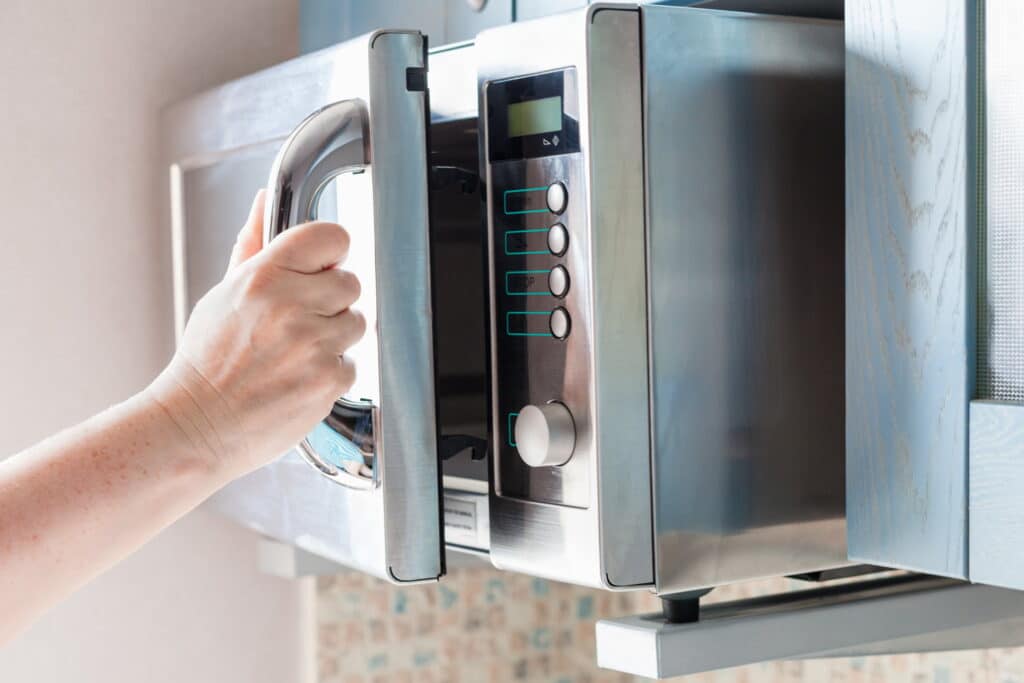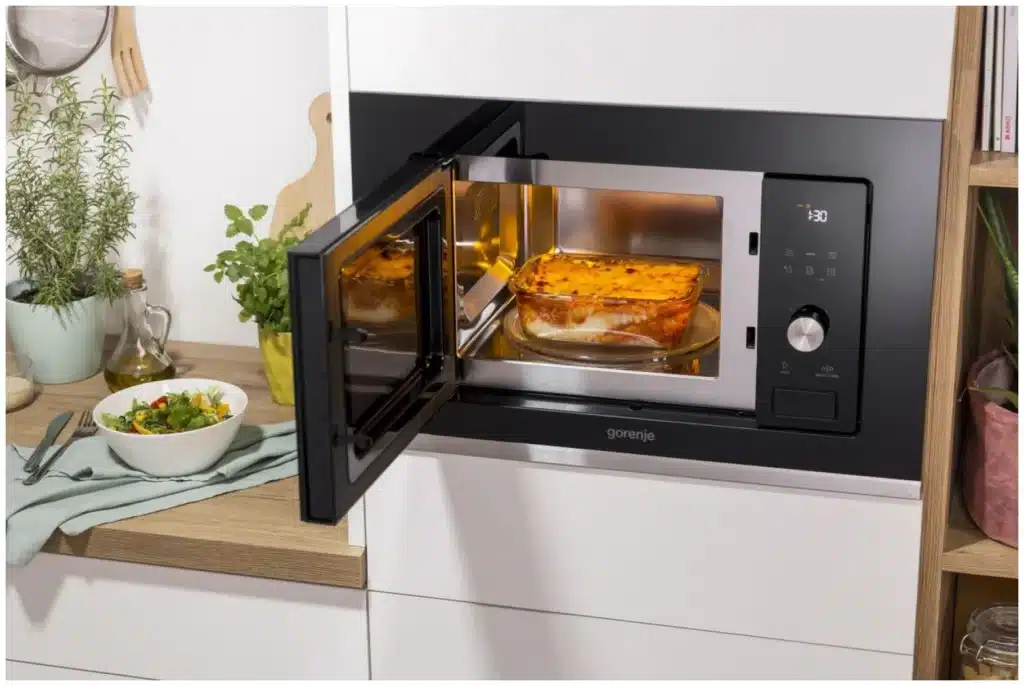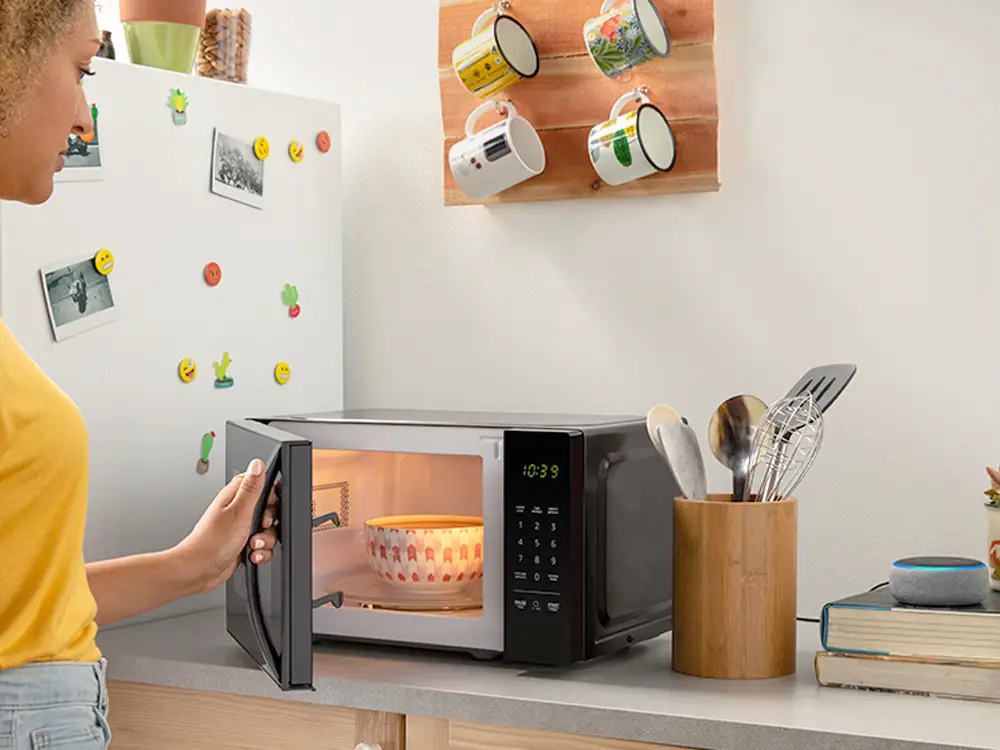How To Vent A Microwave On An Interior Wall
Introduction
How To Vent A Microwave On An Interior Wall: Venting a microwave on an interior wall is a smart and efficient way to enhance your kitchen’s functionality and aesthetics. Proper ventilation not only ensures the removal of cooking odors, steam, and heat but also contributes to a healthier indoor environment. This comprehensive guide will walk you through the essential steps to successfully vent your microwave, allowing you to optimize space while maintaining a clean and comfortable kitchen atmosphere.
Selecting the right location on the interior wall is paramount for a seamless venting installation. Adequate clearance around the microwave is crucial to facilitate proper airflow and prevent any obstructions. Whether you’re upgrading your kitchen or undergoing a remodel, knowing how to properly vent your microwave will provide numerous benefits in terms of both cooking convenience and home value.
We will delve into the step-by-step process, from gathering the necessary tools to testing the ventilation system. By following these instructions closely, you’ll be able to achieve effective ventilation without compromising the structural integrity or aesthetics of your interior wall. Whether you’re a seasoned DIY enthusiast or a beginner, this guide will empower you to confidently tackle the task of venting your microwave on an interior wall, creating a more enjoyable and efficient cooking environment for years to come.

Can you vent a microwave inside?
Your OTR microwave doesn’t need to be vented outside. Every OTR microwave oven can have the fan recirculate air back into the kitchen or exhaust to the outdoors.
Microwave ventilation is essential for safety and heat reduction. Without sufficient ventilation, microwaves might overheat, lose efficiency, or malfunction. Microwaves have built-in ventilation to handle this. These systems exhaust hot air and steam from cooking, keeping the operating temperature safe and preventing moisture buildup that could damage internal components.
Follow the microwave manufacturer’s ventilation instructions when installing. Microwaves are often countertop or over-the-range. Over-the-range microwaves have exhaust fans that vent outside or recirculate charcoal-filtered air. Proper venting improves kitchen air quality and comfort by removing odors, steam, and heat. Venting a microwave ensures safe and efficient operation and protects the appliance and environment from ventilation concerns.
How do you vent a built in microwave?
Venting a built-in microwave is a crucial step to ensure efficient operation and safety. Built-in microwaves are often integrated into cabinetry or walls, which can lead to heat accumulation if not properly vented. To achieve effective ventilation, follow these steps:
Location Selection:
Choose an appropriate location for the microwave, considering the manufacturer’s guidelines.
Ventilation System:
Built-in microwaves usually include exhaust fans that can direct air outside or recirculate it through charcoal filters. Determine whether you’ll be venting outside or using a recirculating system based on your kitchen’s layout and your preferences.
Exhaust Ductwork:
If venting outside, ensure proper ductwork is installed to carry hot air and steam away from the microwave. Use appropriate materials and follow local building codes.
Recirculating Option:
If using a recirculating system, install the charcoal filters according to the manufacturer’s instructions. These filters trap odors and particles before recirculating air back into the kitchen.
Clearance and Airflow:
Maintain recommended clearances around the microwave to allow for proper airflow. Adequate space around the microwave prevents heat buildup and ensures optimal ventilation.
Regular Maintenance:
Clean the exhaust fans, filters, and ventilation components regularly to prevent blockages that could hinder airflow.
What is wall venting for microwave?
Over-the-range microwaves with exhaust fans exhaust kitchen air through wall ductwork. Not all filter and push it back into the kitchen.
Microwave wall venting directs cooking exhaust air and steam to the exterior of a structure. Wall venting requires connecting the microwave’s exhaust system to a building’s outside wall vent aperture using a duct. The duct transports hot air and steam from cooking to the outside, preventing heat or moisture damage.
Wall venting has many advantages. It dumps cooking waste outdoors to keep the kitchen fresh. This procedure also keeps moisture from remaining and causing mold and surface damage. For optimal airflow and no blockages, duct installation and sizing are essential. Microwave wall venting is essential for maximum appliance performance and a healthier, more comfortable cooking atmosphere.
Does a microwave need to be vented?
Since microwaves generate high amounts of heat, it’s important to use them safely to prevent overheating and potential fire hazards. Whether a microwave needs to be vented depends on its type and location. Over-the-range microwaves and built-in microwaves often come equipped with ventilation systems to expel heat, steam, and odors generated during cooking. These ventilation systems help maintain a safe and comfortable kitchen environment by preventing heat buildup, reducing moisture accumulation, and eliminating cooking odors.
If a microwave is placed on a countertop in a well-ventilated area, it may not require dedicated venting since the open space allows natural dissipation of heat and steam. However, even countertop microwaves can benefit from some form of ventilation to prevent overheating and moisture-related issues in the surrounding environment.
What tools and materials are typically required to successfully vent a microwave on an interior wall?
To successfully vent a microwave on an interior wall, you will need a variety of tools and materials to ensure a proper installation. Here’s a list of commonly required items:
Tools:
Power Drill: A drill will be necessary for creating holes in the wall for venting ducts and mounting hardware.
Hole Saw or Jigsaw: Depending on the size of the vent duct, you might need a hole saw or jigsaw to cut an appropriately sized opening in the wall for the vent.
Screwdriver Set: A set of screwdrivers will be useful for removing the microwave’s casing and any mounting hardware.
Tape Measure: Accurate measurements are essential for positioning the vent correctly and ensuring it aligns with the microwave
Stud Finder: If the microwave requires mounting to studs, a stud finder will help you locate them accurately.
Materials:
Microwave Vent Kit: Purchase a microwave vent kit that includes the necessary components such as ductwork, vent cover, mounting hardware, and adapters.
Ductwork: Depending on the type of microwave venting (recirculating or external), you might need flexible or rigid ducts.
Vent Cover: This is installed on the exterior wall to prevent rain, pests, and debris from entering the vent.
Wall Cap: If the vent exits through an exterior wall, a wall cap with a damper helps prevent outside elements from entering when the vent is not in use.
Mounting Hardware: Screws, bolts, and brackets to secure the microwave in place and attach it to the interior wall.
Caulk or Sealant: A caulk gun and weatherproof sealant are essential for sealing gaps around the vent and preventing air leaks.
Vent Collar or Transition Fittings: These components are used to connect the microwave’s vent to the ductwork.
Drywall Patch Kit: In case the wall needs to be modified, a drywall patch kit will help you repair any holes or cutouts.
What are the different types of venting options available for microwaves installed on interior walls?
When installing a microwave on an interior wall, several venting options cater to different needs and circumstances. The two primary types are recirculating (ductless) and external venting.
Recirculating Ventilation:
In recirculating venting, the microwave draws in cooking fumes and odors, filters them through a charcoal or other type of filter, and then releases the purified air back into the kitchen. This method is ideal when there’s no direct access to an exterior wall or for apartments and condos. However, it doesn’t effectively remove moisture or heat from cooking.
External Ventilation:
External venting involves routing the microwave’s exhaust through ductwork that leads outside. This method is more efficient at removing cooking odors, heat, and moisture. It requires creating a hole in the wall to install ducts and a vent cover on the exterior.
The choice between these options depends on factors like kitchen layout, budget, local building codes, and the desired effectiveness of odor and moisture removal. Recirculating systems are easier to install but may not offer the same level of ventilation as external systems. External venting requires more complex installation but provides better overall air quality and ventilation performance. Always follow the manufacturer’s guidelines and consult with professionals if needed to ensure the chosen venting option is appropriate for your specific situation.
How do you determine the appropriate location for venting the microwave on the interior wall?
Selecting the right location for venting a microwave on an interior wall is crucial for effective ventilation and aesthetics. Several considerations guide this decision:
Proximity to Cooking Area:
Place the microwave near the cooking area to ensure efficient removal of cooking odors, heat, and moisture. This reduces the distance for air circulation and minimizes the spread of fumes.
Wall Structure and Studs:
Locate studs within the wall to ensure proper support for mounting the microwave. This prevents instability and potential damage to the wall.
Access to Exterior Wall:
If opting for external venting, position the microwave close to an exterior wall to reduce the length and complexity of ductwork. This maximizes ventilation efficiency.
Cabinet and Counter Space:
Consider cabinet and counter space around the microwave. Ensure that doors, drawers, and adjacent appliances can open comfortably without obstructing the microwave’s functionality or venting.
Clearance from Obstacles:
Maintain adequate clearance above and around the microwave to facilitate air intake and exhaust. Check the manufacturer’s guidelines for specific clearance requirements.
Electrical and Plumbing Connections:
Avoid obstructing electrical outlets or plumbing lines that may be present in the wall. Choose a location that doesn’t interfere with these utilities.
Aesthetics:
Balance functionality with aesthetics. The microwave should complement the kitchen’s design and not disrupt the overall visual appeal.
User Convenience:
Ensure the microwave’s placement is convenient for users of varying heights and abilities.
Safety:
Avoid placing the microwave near open flames or potential fire hazards.
Before finalizing the location, consult the microwave’s installation manual for specific guidelines from the manufacturer. It’s also advisable to consult a professional if you’re uncertain about the best placement to ensure optimal ventilation and a successful installation.
Are there any common challenges or issues one might encounter when venting a microwave on an interior wall, and how can they be overcome?
Venting a microwave on an interior wall can come with its share of challenges and potential issues. Being prepared to address these hurdles can lead to a smoother installation process:
Structural Obstacles:
Encountering studs, pipes, or electrical wiring within the wall can complicate ductwork placement. A stud finder and careful planning can help locate obstacles, and you can reroute ducts around them or make necessary adjustments.
Wall Material:
Different wall materials (such as brick or concrete) require specific tools and techniques for cutting openings. Specialized drill bits or saws designed for these materials can help overcome this challenge.
Exterior Vent Placement:
If opting for external venting, finding an appropriate location on the exterior wall that meets both functional and aesthetic needs might be tricky. Balancing ventilation efficiency with the home’s appearance is key.
Duct Routing:
Determining the most direct and efficient route for the ductwork can be complex. Careful measurement, planning, and possibly creating access points can make the routing process smoother.
Sealing and Insulation:
Improper sealing or insulation around the vent can lead to air leaks, reducing the effectiveness of ventilation. Use weatherproof sealants and insulating materials to ensure a tight seal.
Professional Assistance:
In some cases, challenges might outweigh DIY capabilities. If uncertain about installation or encountering unexpected issues, seeking professional help ensures a safe and successful outcome.
Code Compliance:
Adhering to local building codes and regulations for venting installations is crucial. Familiarize yourself with these codes or consult experts to ensure compliance.
Aesthetics:
The venting process might impact the interior and exterior appearances. Employ creative solutions such as decorative covers or matching paint to seamlessly integrate the vent.
By thoroughly researching the installation process, understanding potential obstacles, and being ready to adapt, you can minimize challenges and confidently navigate any issues that arise during the microwave venting process.

Conclusion
Venting a microwave on an interior wall is a task that brings both practicality and aesthetic value to your kitchen space. By effectively managing cooking odors, steam, and heat, you not only create a more pleasant cooking environment but also maintain the overall indoor air quality.
The careful consideration of the vent microwave placement, height, and compatibility with the venting kit is essential for a successful installation. Ensuring proper alignment with wall studs guarantees stability and longevity for the setup, while following the manufacturer’s guidelines diligently ensures that the venting system operates efficiently and effectively.
A well-ventilated kitchen contributes to a cleaner and healthier living environment by preventing the accumulation of moisture, grease, and cooking byproducts. The meticulous assembly of the venting components, coupled with accurate measurements and secure installations, ensures that the entire system functions seamlessly.
Regular maintenance, such as cleaning the vent and checking for any potential blockages, will extend the longevity of both the microwave and the venting mechanism. Overall, the process of venting a microwave on an interior wall combines practicality with aesthetics, enhancing the functionality and atmosphere of your kitchen space. By adhering to the steps outlined in this guide and prioritizing safety, you can confidently achieve efficient ventilation and elevate your cooking experience.








